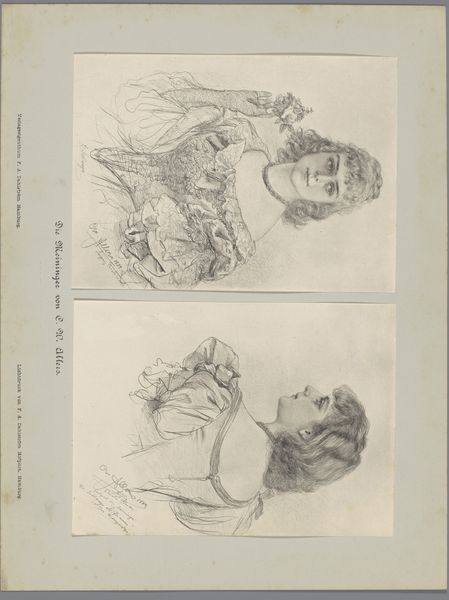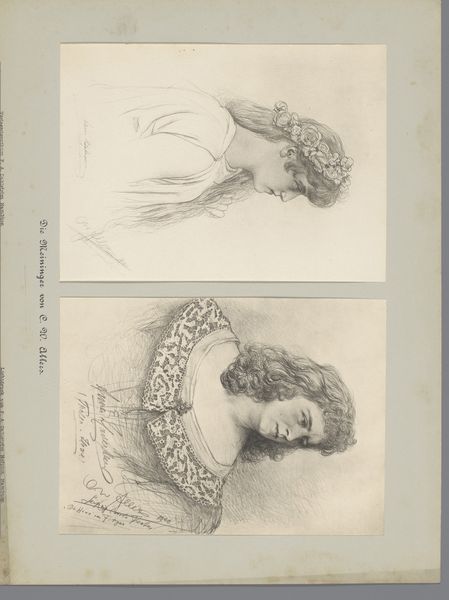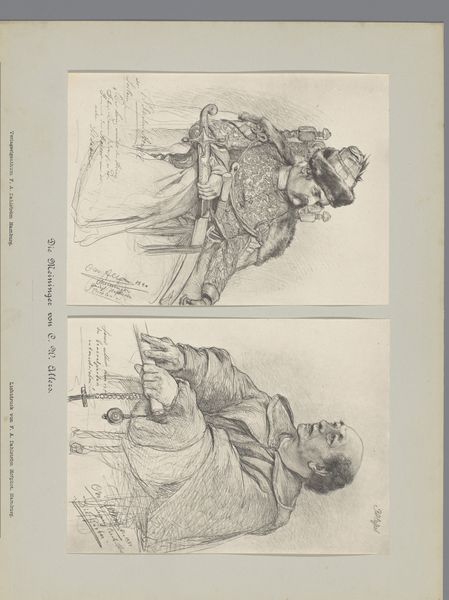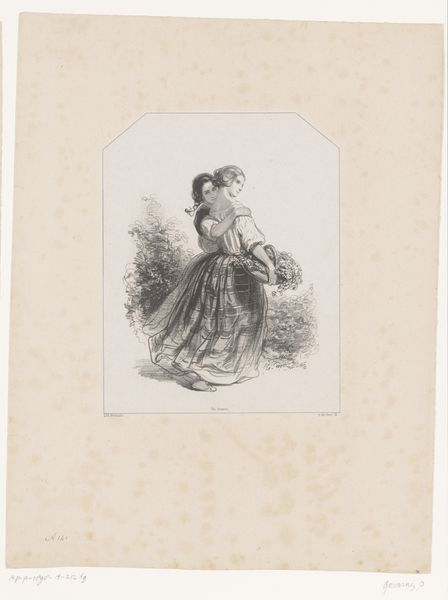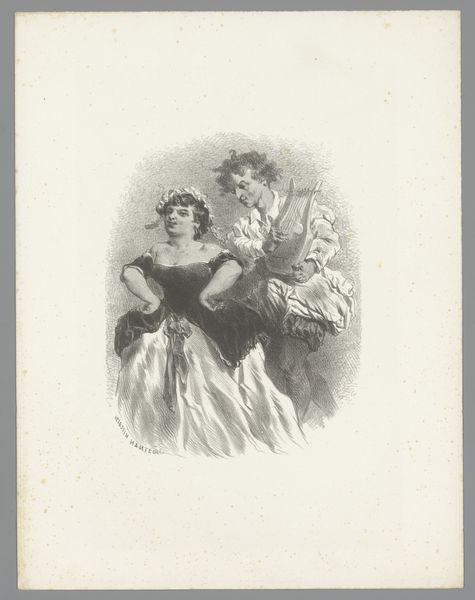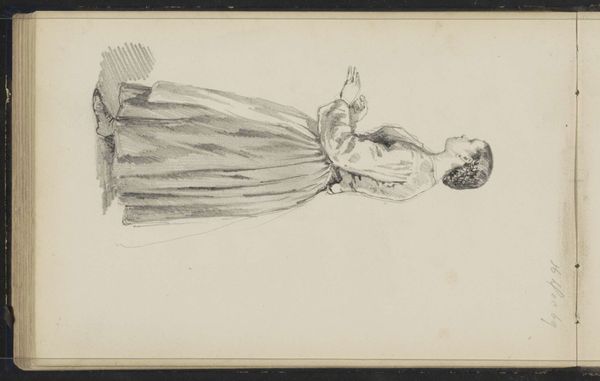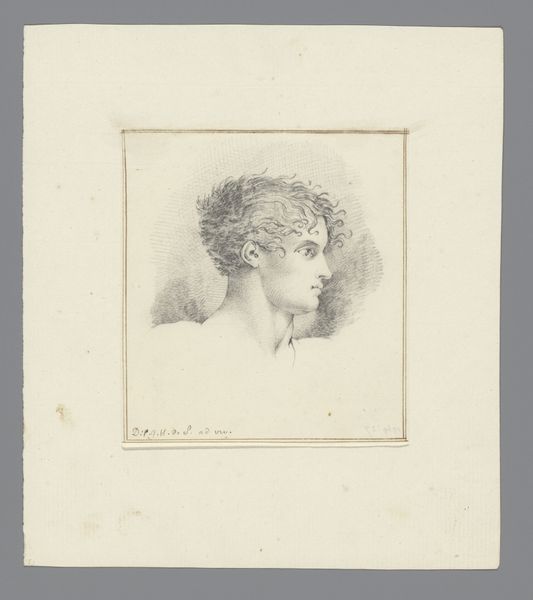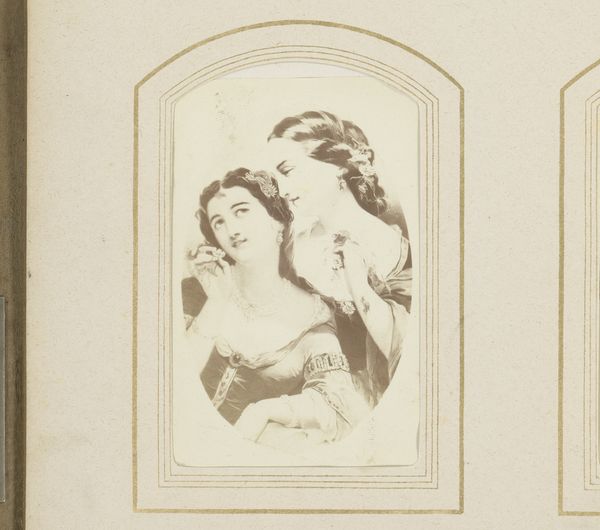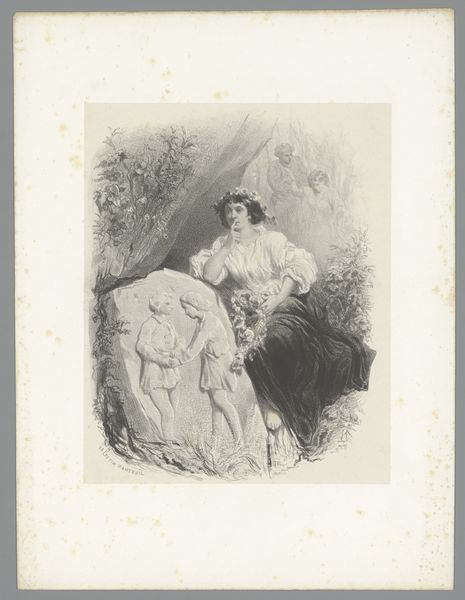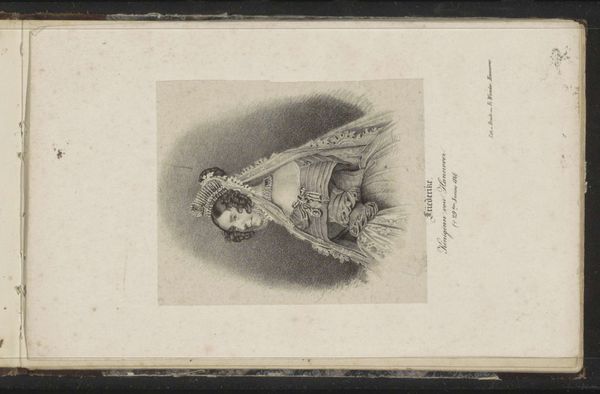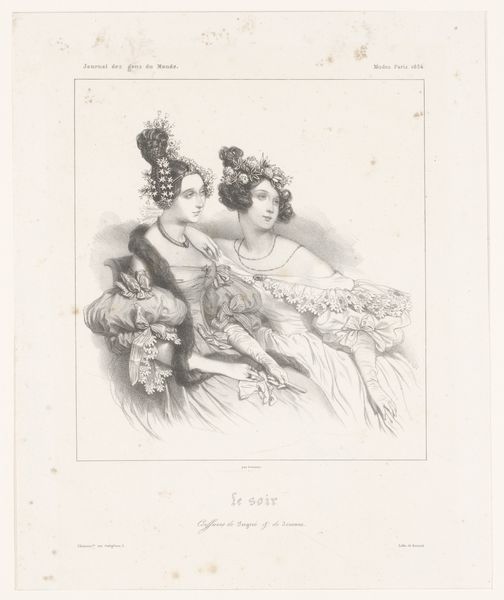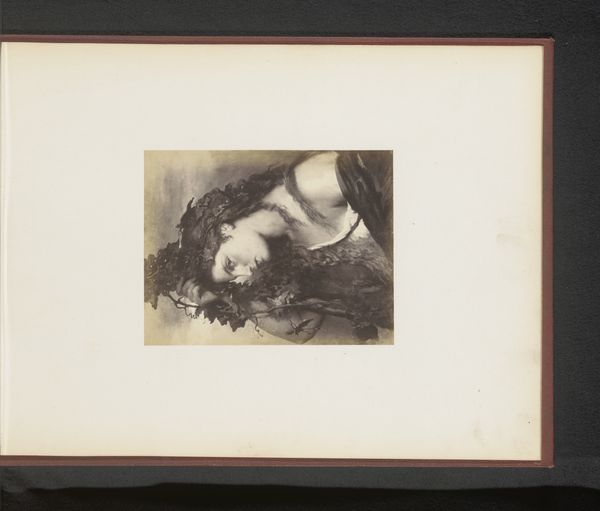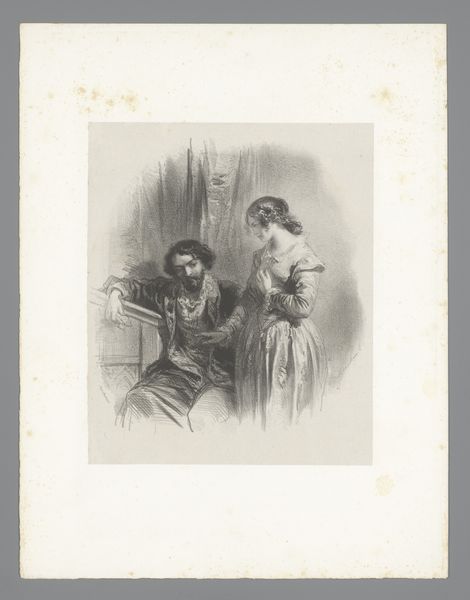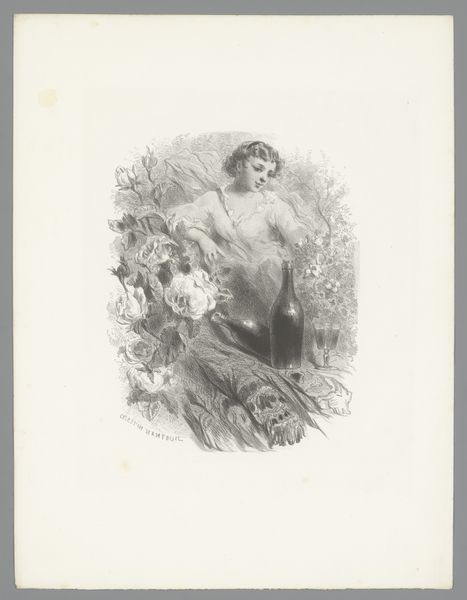
Twee fotoreproducties van tekeningen, voorstellende een portret van Alexander Barthel als Marcus Antonius en een portret van Anna Haverland als Iphigenia 1890
0:00
0:00
drawing, pencil
#
portrait
#
drawing
#
toned paper
#
light pencil work
#
pencil sketch
#
sketch book
#
classical-realism
#
personal sketchbook
#
pencil
#
sketchbook drawing
#
watercolour illustration
#
history-painting
#
storyboard and sketchbook work
#
academic-art
#
sketchbook art
#
watercolor
#
realism
Dimensions: height 237 mm, width 317 mm
Copyright: Rijks Museum: Open Domain
These drawings by F. A. Dahlström depict Alexander Barthel as Marcus Antonius and Anna Haverland as Iphigenia. We see classical figures reborn, draped in the garb of antiquity. Consider Iphigenia's laurel wreath, a potent symbol reaching back to Apollo. The wreath signified victory, honor, and divine favor in ancient Greece. We see it crowning athletes, poets, and heroes alike. Its circular form embodies eternity, an unbroken cycle of life and rebirth. But look closer: the laurel also carries a somber echo. In the Roman era, emperors donned it, foreshadowing power and authority. Later, Renaissance artists revived it, signifying humanist ideals. The wreath’s meaning has subtly shifted, overlaid with layers of cultural memory. Here, it evokes both triumph and sacrifice. The image invites contemplation on how symbols evolve, shaped by the collective psyche.
Comments
No comments
Be the first to comment and join the conversation on the ultimate creative platform.
